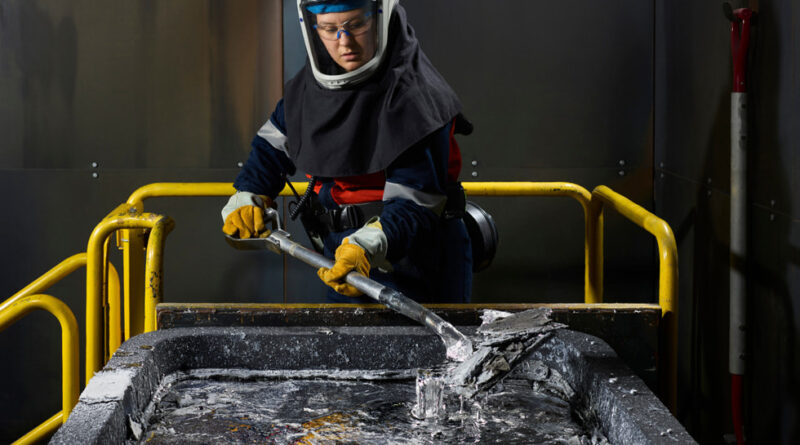African green metal mining: Projects and main participants
In Africa, there are several projects in green metal mining that have either been approved or are still at infancy stage. Where African countries lack policies and frameworks to adequately regulate green metal activities, the conditions set out in investment packages to secure supply of mineral resources will likely fill the gap in the meantime, acting as a regulatory guide for policymakers in those countries.
The European Union’s (EU’s) Global Gateway Initiative (GGI) is one such initiative. It seeks to invest €150 billion in Africa with the primary aim of supporting the green transition and digital transformation. These investment packages come with governance and regulatory requirements, with an emphasis on environmental, social and governance obligations. Such obligations aim to improve worker conditions, provide guidelines for managing the impacts on communities and the environment, and manage governance risks in all mineral supply chains. They apply to mineral processors, smelters and refiners, including those integrated with mine sites, in all countries. One of the stated outcomes of the GGI is to help establish “enabling regulatory frameworks”.
In the DRC, the GGI’s focus is on cobalt, copper and lithium. In Zambia, the focus is on cobalt, copper and manganese extraction. The memoranda of understanding with both countries specify objectives such as “cooperation to achieve suitable and responsible production, and capacity building to enforce relevant rules”.
The success of these investment packages by the EU is threatened by China’s presence in both the DRC and Zambia. In the DRC, for example, China’s CMOC, previously known as China Molybdenum Company Limited, runs the world’s largest cobalt mine. In May 2023, the Congolese government stated that it would like to see the firm expand into nickel. In Zambia, the use of China’s yuan encourages further Chinese investments. Both the DRC and Zambia are open to partnering with countries that will help their localisation and beneficiation efforts. However, China’s traditional stance of non-interference may hamper these countries’ efforts to formulate suitable policies with EU investors.
To date, only the DRC in 2018 has classified cobalt, coltan and germanium as strategic minerals that would have a 10% royalty attached to them. This was not done as part of a robust green minerals and metals policy but rather to increase revenues because cobalt and germanium prices had reached their peak in that year. Coltan had always fetched a high price and been in demand and therefore was also included. Copper has not been classified as such yet.
In Zambia, the government promulgated the National Mineral Resource Development Policy in 2022, which addresses issues from mining rights administration to development of value chains. However, this is a policy that applies across the extractives sector. Neither Zambia nor the DRC has yet developed a comprehensive green metals and minerals policy that classifies these metals as such, aligns the country’s domestic interests with its critical minerals status, and ensures transparency and predictability in management of green metals. Instead, the EU memoranda of understanding for both countries states that “the partnership has a primary focus on strategic and critical raw materials as defined by the EU definition or its future updates”.
In June 2022, the United States announced and convened a meeting through a new partnership called the Minerals Security Partnership, which seeks to understand priorities, challenges and opportunities related to green mineral value chains.
Participants in the meeting included Australia, Canada, the EU, Finland, France, Japan, the Republic of Korea, Norway, Sweden, the United Kingdom and the United States. The meeting was also attended by Argentina, Brazil, the DRC, Mongolia, Mozambique, Namibia, Tanzania and Zambia.
Namibia has both rare earth minerals and significant lithium deposits. In 2023, the national government imposed a ban on lithium exports to give the legislature time to develop and implement regulatory frameworks that would enable the country to benefit better from exporting the resource.
The government stated that it intends to ensure that future lithium deals include localisation requirements for foreign investors, such as including local content and establishing processing facilities. The development of the policy framework has not yet begun, and general elections will likely hamper progress for several months. In the meantime, the government will allow small quantities of lithium to be exported, subject to its approval.
Chinese companies in Namibia have exported tonnes of lithium ore to China and have reneged on the ad hoc agreement to build a processing plant as the government begins the process of developing a framework.
The government of Zimbabwe banned the export of lithium ore in 2022, citing a need to develop a policy to regulate the sector – especially as artisanal mining in the fledging sector begins to grow. In the interim, it uses the Base Mineral Export Control Act, passed in December 2022, to encourage local processing of metals. This regulation does not have a clear focus on green metals. The government stated that it wants investors to produce a plan to develop local value chains as part of the application process for lithium licensing. Authorities have shut down artisanal mines that have become unsafe and confiscated minerals extracted from them. Despite export bans, some lithium mines in the country continue to operate, exporting tonnes of lithium in 2023.
Zimbabwe and Namibia have lithium, cobalt, manganese and graphite deposits, but both countries struggle with infrastructure and economic deficiencies, water and labour shortages, and dwindling capacity to supply electricity to industry. These cases demonstrate the developmental and operational risks related to non-existent policies for lithium, despite the intended goals of localisation and beneficiation.
In 2022, South Africa developed the Exploration Strategy for the Mining Industry. It lists cobalt, nickel, copper, zinc, lead and rare earth minerals among its “targeted critical minerals and metals” and categorises vanadium and lithium as battery minerals. The strategy aims to reinvigorate mining in the country and ensure beneficiation and localisation along the value chain.
In June 2023, Ghana’s cabinet approved the first green mineral policy to manage lithium exploration and production. It specifically seeks to ensure local processing of lithium before export. The policy will likely result in amendments to mining legislation in the next 12 months, such as increasing mineral royalties above 5% and local content requirements above 10%, which is the current standard in the sector.
In the absence of an African green metals framework, and as African countries develop their own policies to regulate and govern green metals, the African Development Bank – together with the African Minerals Development Centre, the African Legal Support Facility, the United Nations Economic Commission for Africa and the United Nations Development Programme – has prepared an African Green Minerals Strategy that will act as a guiding document for a fully-fledged green metals strategy for the continent.




